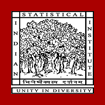Periodicity of quasar and galaxy redshift
Article Type
Research Article
Publication Title
Astronomy and Astrophysics
Abstract
Context. An approach for studying the large-scale structure of the Universe lies in the detection and analysis of periodicity of redshift values of extragalactic objects, galaxies, and quasi stellar objects (QSO), in particular. Moreover, the hypothesis of the existence of multiple periodicities in the redshift distributions deserves exploration. The task is compounded by the presence of confounding effects and measurement noise. Aims. Studies of periodicity detection in redshift values of extragalactic objects obtained from the Sloan Digital Sky Survey (SDSS) have been conducted in the past, largely based on the Fourier transform. The present study aims to revisit the same thing using the singular value decomposition (SVD) as the primary tool. Methods. Periodicity detection and the determination of the fundamental period have been performed using a standard spectral approach as well as a SVD-based approach for a variety of simulated datasets. The analysis of the quasar redshift data from DR12 and galaxy redshift dataset of DR10 from SDSS data has been carried out. Results. A wide range of periodicities are observed in different redshift ranges of the quasar datasets. For redshifts greater than 0.03, a period length of 0.2094 was determined while periodicities of 0.1210 and 0.0654 were obtained for redshift ranges (0.03, 1) and (3, 4), respectively. Twin periodicities of 0.1153 and 0.0807 were obtained for the redshift range (1, 3). Determining the ranges to be examined has been done based on histogram computation; the binwidths of which have been obtained by employing a kernel density estimation. The redshift sequence for the galaxy samples exhibits a somewhat different nature, but still contains periodic components. Twin periodicities of 0.0056 and 0.0079 were observed for a redshift range greater than 0.03. Conclusions. Galaxy and quasar redshift values form sequences, which are not only discrete in amplitude but also contain periodic components. The superiority of the singular value decomposition method over the spectral estimation approach, in redshift periodicity analysis especially from the point of view of robustness, is demonstrated through simulations. The existence of periodicity for quasar and galaxy families is thus firmly established, lending further support to the Hoyle-Narlikar variable mass theory.
DOI
10.1051/0004-6361/201630164
Publication Date
11-1-2020
Recommended Citation
Mal, Arindam; Palit, Sarbani; Bhattacharya, Ujjwal; and Roy, Sisir, "Periodicity of quasar and galaxy redshift" (2020). Journal Articles. 70.
https://digitalcommons.isical.ac.in/journal-articles/70



Comments
Open Access, Bronze, Green